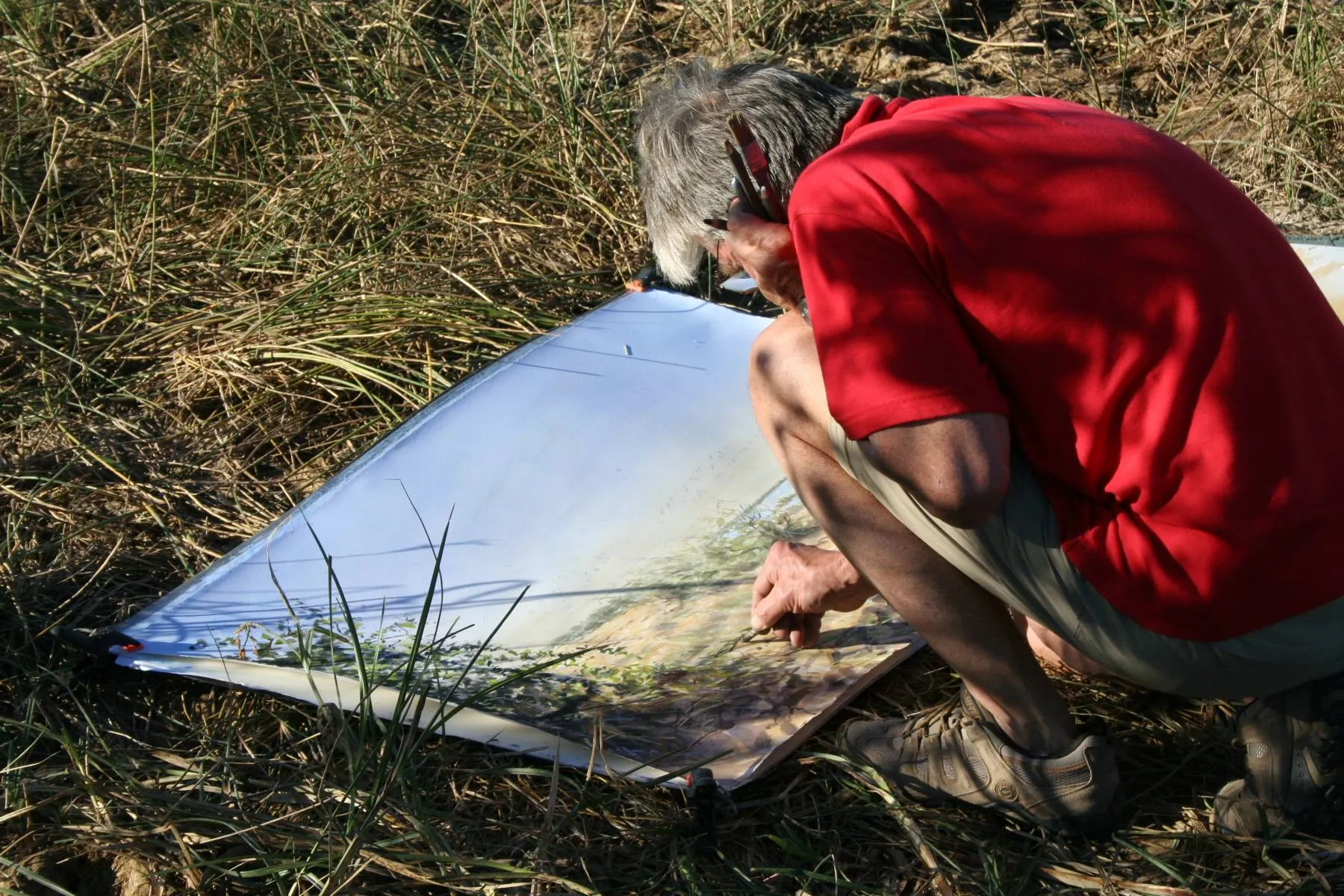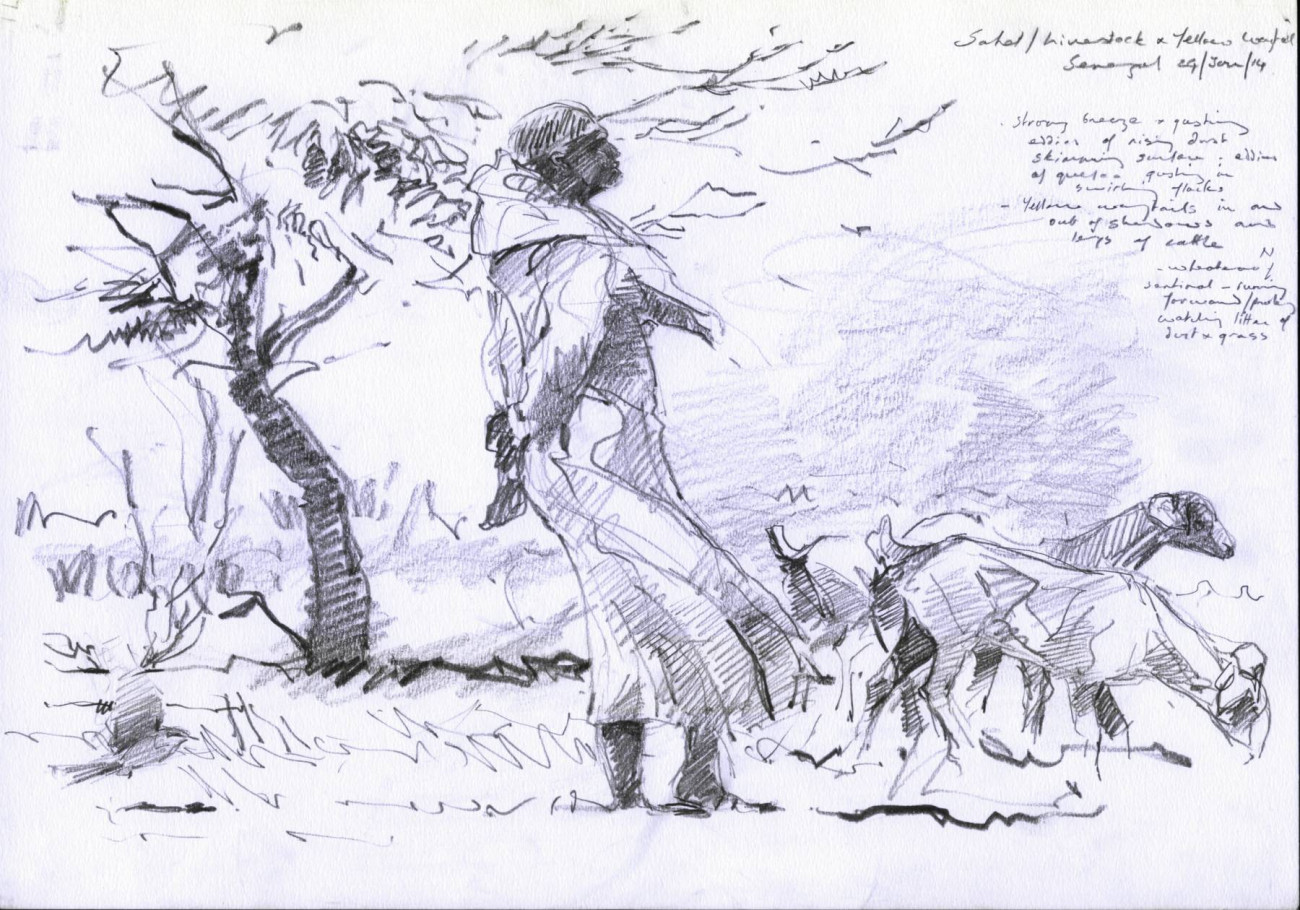Working with artists, photographers and writers has enabled BTO to communicate its research on migrant birds to new audiences
An increasing body of research suggests that scientific messages may be communicated more effectively through the use of art, storytelling and photography, rather than via peer-reviewed papers. The need to broaden engagement with work on declining populations of migrant birds prompted BTO to explore the potential for an arts and culture approach to better present its ongoing research into UK birds that winter in Africa.

Delivering meaningful change
The populations of many of the birds that migrate between Europe and Africa are in decline. As migratory bird populations may be affected by threats on their breeding grounds, wintering areas and stopover sites, they are particularly vulnerable to the effects of environmental change. Ascertaining the causes of population change can be very difficult, but BTO research has helped to identify potential drivers across a broad range of species. In addition to doing the research the organisation also needs to engage a broader audience with its work. By doing this BTO can secure the funding and support needed to carry out the work, and ensure its results are available to both key stakeholders and a wider public.
It is increasingly recognised that engagement with science is greatly enhanced where that engagement takes place through the creative arts. Audiences exposed to scientific ideas through such pathways have been shown to demonstrate meaningful change in their understanding of topics and, where the topic has an environmental basis, their behaviour. In 2014, BTO set out to determine whether and arts and culture-based approach could be used to better communicate its migration research to new and existing audiences.
Where art and science meet
This project, titled Flight Lines, began as a partnership with the Society of Wildlife Artists (SWLA) and involved SWLA member artists, together with storytellers and photographers, working alongside BTO researchers and volunteers, both here in the UK, elsewhere in Europe and in West Africa. In 2014, a team of four SWLA artists joined Phil Atkinson, BTO’s Head of International Research, on a trip to Senegal in West Africa. It is here that significant numbers of some of our summer migrants either spend the winter or stop over during migration. The trip to Senegal was a learning experience for those involved. For Phil Atkinson this was a chance to see the landscape in a different way; for the four artists – Robert Greenhalf, Bruce Pearson, Greg Poole and Esther Tyson – this was an opportunity to discover the context to what they were seeing and sketching. Why did the landscape look the way that it did? What were the birds doing and how were changes in the habitats here shaping their populations?
Over the next two years further trips followed, with SWLA member artist Federico Gemma working with Senior BTO Research Ecologist Chris Hewson on UK Cuckoos migrating through the Po watershed in Italy, three artists joining BTO volunteers on Bardsey to document autumn migration, and many others working with staff and volunteers working on migrant birds at field sites across the UK. The results of this work have come together in exhibitions in London, Edinburgh and Norfolk, providing opportunities for new audiences to learn about BTO work and the birds themselves.

Sahel shepherd and Yellow Wagtail, by Bruce Pearson
Working across disciplines
One of the most interesting aspects of the partnering of artists, researchers and volunteers through the Flight Lines project has been the diverse ways in which they approach the same scene and respond to it. One summer evening, for example, SWLA member artists Harriet Mead and Esther Tyson headed out into Thetford Forest to join BTO Research Ecologists Ian Henderson, Greg Conway and their volunteers, working on the forest’s Nightjars. Ian and Greg’s work with tiny tracking devices has documented how the birds use the forest and surrounding landscape, additionally revealing the bird's journeys to and from Africa. Esther and Harriet were here to document the bird, its habitat and, importantly, those studying its behaviour and ecology; they did this through painting and sculpture. The resulting work, which was presented at Nature Matters 2016 and as part of the Cambridge Festival of Ideas, brought the research work to new audiences.
One of the most significant outputs from the project came in the form of a BTO book, Flight Lines: tracking the wonders of bird migration, published in August 2017. The book brought together the artwork made as part of the project, presenting this alongside a narrative that described the latest research findings from BTO and other work on summer migrants. There was a personal element to the narrative too, both through that of the book's author, Mike Toms (a BTO staff member, volunteer ringer and nest recorder) and through the voices of the artists, staff and volunteers involved in the project. A good number of the artworks presented in the book are field sketches, full of energy and capturing birds and volunteers in ways that should trigger memories of the reader's own encounters with migrant birds, either as a birdwatcher, survey volunteer or interested observer.
A lasting legacy
The project continues to attract a great deal of interest, with others in our sector holding Flight Lines up as an example of how an arts and culture agenda can greatly increase connection with conservation science. It has led to many new opportunities, enabling BTO to build on its success and to work with creatives in other areas of its research work. The project has also helped BTO researchers to examine how they communicate their scientific work and to explore the more creative language available within the arts but absent from most scientific communication. The hope is that the Flight Lines book and ongoing project work will continue to deepen engagement with the BTO's work and secure even more support for the research that still needs to be done. Flight Lines was made possible because of the generous legacy left by Penny Hollow, and the kindness of her executors, but more funding is needed to make the most of the opportunities continuing to emerge as a result of the project.
Featured Publication
This book, a joint project between BTO and the Society of Wildlife Artists (SWLA), explores Afro-Palaearctic migration in a unique and engaging way.

Staff Contact(s)
Mike Toms
Head of Communications
